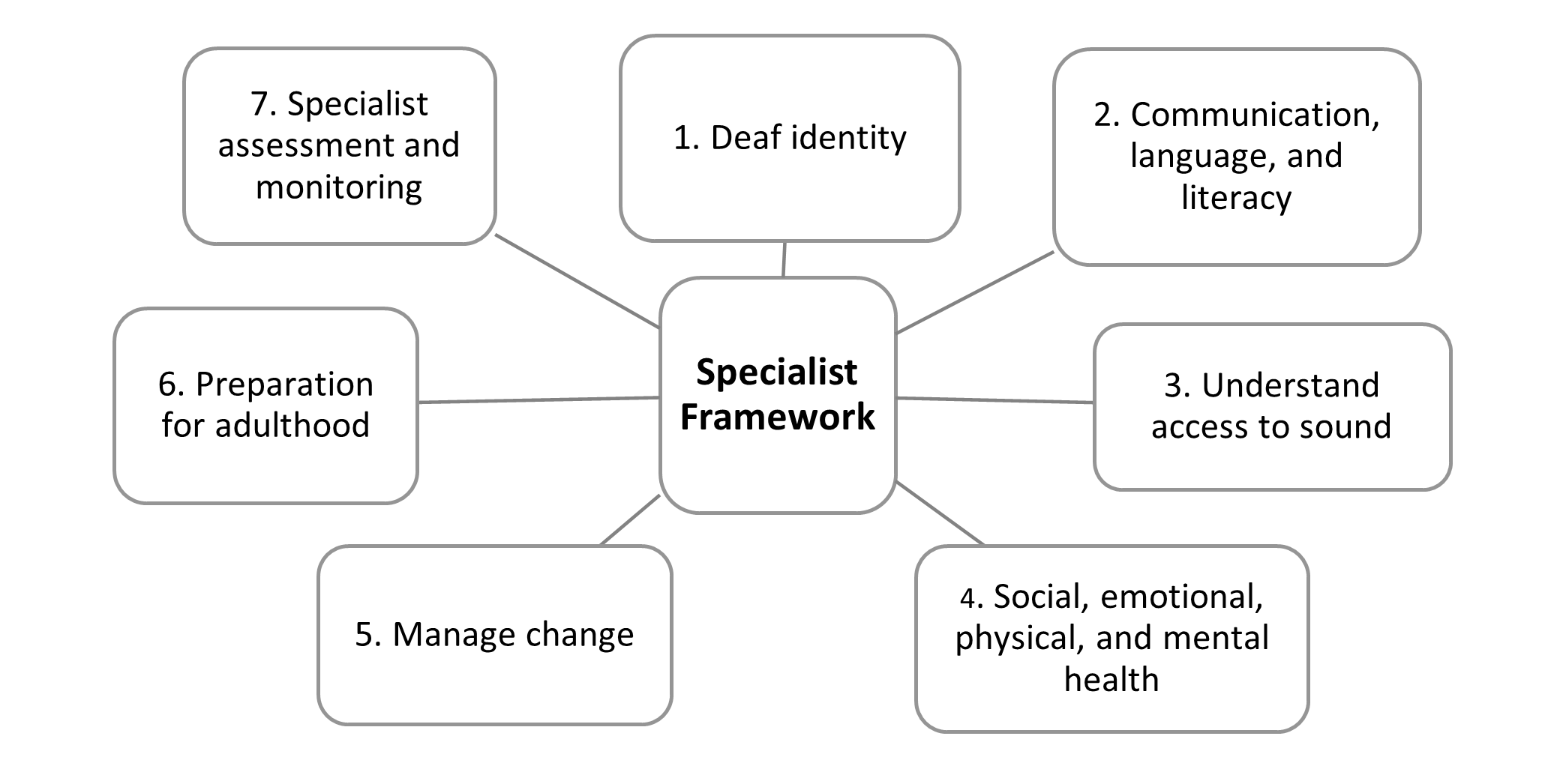3. Understand access to sound

Access to sound and speech is individual and influenced by a range of factors, so developing an understanding in this area is multi-faceted. Many Deaf Children and Young People (DCYP) will use some form of amplification or aid to hearing but not all. Hearing. Listening and language needs, skills, and priorities will likely change over time. As with all areas of this work, the aim is about equipping the DCYP with the understanding and knowledge of their deafness so they can make informed choices about why, how, and when they access sound and speech.
Open and sensitive discussions, for example, around aetiology (cause of deafness), are essential. This is supported by the Qualified Teacher of Deaf Children and Young People (QToD) having knowledge of the DCYP’s specific aetiology and what that means for the DCYP and the wider family. Language around deafness remains ever important.
Engagement with audiology remains key throughout a child’s lifetime even if they choose not to use amplification. Additional factors to consider will include the amplification requirements of DCYP with additional or complex needs, individual family circumstance culture and belief systems, individual preference and practicability, rapid changes in technology, and transition from paediatric to adult services.
3a. Know about personal amplification
3b. Know about other technology for access to sound
3c. Engage with audiology services and understand audiological information
3d. Understand aetiology (cause) of deafness
3e. Knowledge of acoustics and the impact on listening
For more information on this resource or if you would like to make a suggestion or contribution, please send an email to: [email protected]
Download the Specialist Deaf Curriculum Framework quick overview document via this link.
Download the Word document version Specialist Deaf Curriculum Framework via this link.
Resources
Please note: Some of this information has been archived and as such may be out of date or no longer relevant.

